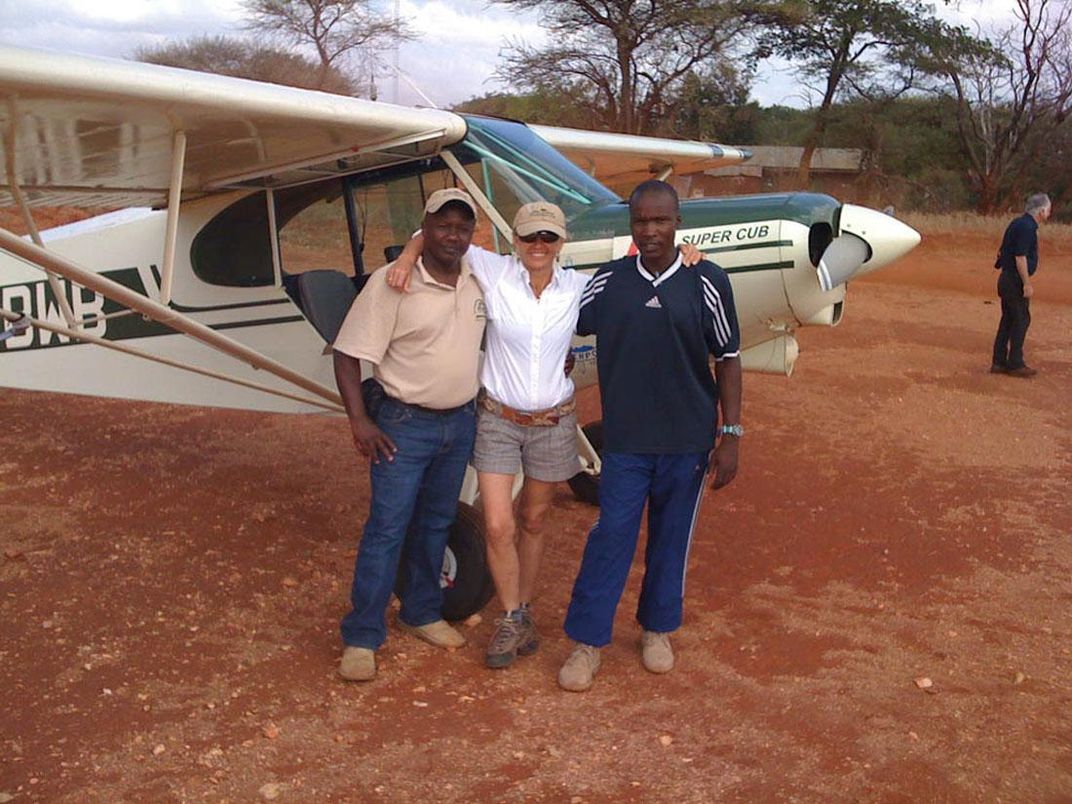Pilots vs. Poachers
The future of elephant survival may depend, in part, on aerial patrols.
/https://tf-cmsv2-smithsonianmag-media.s3.amazonaws.com/filer/a6/e8/a6e83988-0be1-45bd-949c-a4d9996da4e3/elephant.jpg)
The Spirit of St. Louis? Check. The Bell X-1? Yep. SpaceShipOne? Yes, indeed. Cardboard elephant? Wait a minute…
When visiting the National Air and Space Museum, you expect to see planes, not pachyderms. But visitors to the Museum on the Mall can now see a temporary exhibit that’s the result of a collaboration between the Museum and the National Zoo.
When curator Dorothy Cochrane heard that the Zoo wanted to mount a public awareness campaign about wildlife trafficking, she immediately thought of aerobatic pilot Patty Wagstaff, whose Goodrich Extra 260 has been on display at the Museum since 1994. Wagstaff has been involved with wildlife conservation since the late 1990s. “You might wonder what she’s doing,” said Cochrane in a talk at the Museum. “Airshows to raise money? No. What she’s actually doing is training members of the Kenya Wildlife Service in safe and unusual altitude flight.” The pilots fly as low as 100 feet, and no higher than 1,000 feet while patrolling over bush country. “They use bush planes like the Super Cub,” says Cochrane, “which are rugged and easily maintained.”

Earlier this year Wagstaff and Bill Clark (of the Kenya Wildlife Service) gave the GE Aviation Lecture at the Museum, titled “Searching for a Missing Tailwheel in a Herd of Elephants: Bush Flying with the Kenya Wildlife Service.” Aviation is a crucial element to patrolling the national parks of Kenya, and the Kenya Wildlife Service has two important functions, said Clark: “The first is to deter poaching, and the second is to catch the poachers who refuse to be deterred.”
At the time of the lecture, the Kenya Wildlife Service air wing had four operational patrol aircraft, with a fifth nearly finished after being rebuilt. There are five additional patrol aircraft awaiting rebuilds, noted Clark. Each pilot is given a park to cover, said Wagstaff, which they might patrol for a year. The pilots search for elephant herds; once located, rangers are deployed to protect them. The pilots also monitor habitat, ferry supplies to remote posts cut off by seasonal flooding, protect wildlife from tour operator abuses, and evacuate sick and wounded rangers, said Clark.
“The poachers who have been caught say that general aviation is the single biggest deterrent to poaching in Kenya,” said Wagstaff. The program has had startling results: In the past three years, there have been no elephants killed during daylight hours. Interested in learning more? Go to 96elephants.org.